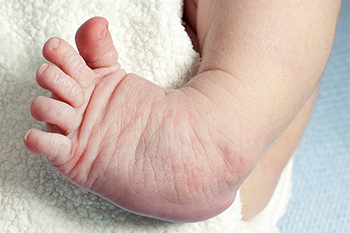Kirksville (660) 665-9000
September 2024
Recovering From an Ankle Injury

Recovering from a broken ankle requires patience and proper care to ensure the best possible outcome. The main goal is to allow the ankle to heal fully, which reduces the risk of chronic ankle problems. Some ankle fractures heal with rest and immobilization, while others may require surgery and the use of a brace. Following a podiatrist's guidance is essential for managing pain, reducing swelling, and beginning weight-bearing activities at the right time. This foot doctor will also provide exercises that help restore strength, mobility, and balance. Gradual return to daily activities is essential to avoid re-injury. Regular check-ins with a podiatrist can help monitor healing and address any complications, such as persistent pain or swelling. Long-term, some individuals may experience arthritis, but early treatment and careful rehabilitation can minimize this risk. If you are recovering from a broken ankle, it is suggested that you make an appointment with a podiatrist for treatment options.
Broken ankles need immediate treatment. If you are seeking treatment, contact Deborah Holte, DPM from Northeast Missouri Foot Clinic. Our doctor can provide the care you need to keep you pain-free and on your feet.
Broken Ankles
A broken ankle is experienced when a person fractures their tibia or fibula in the lower leg and ankle area. Both of these bones are attached at the bottom of the leg and combine to form what we know to be our ankle.
When a physician is referring to a break of the ankle, he or she is usually referring to a break in the area where the tibia and fibula are joined to create our ankle joint. Ankles are more prone to fractures because the ankle is an area that suffers a lot of pressure and stress. There are some obvious signs when a person experiences a fractured ankle, and the following symptoms may be present.
Symptoms of a Fractured Ankle
- Excessive pain when the area is touched or when any pressure is placed on the ankle
- Swelling around the area
- Bruising of the area
- Area appears to be deformed
If you suspect an ankle fracture, it is recommended to seek treatment as soon as possible. The sooner you have your podiatrist diagnose the fracture, the quicker you’ll be on the way towards recovery.
If you have any questions, please feel free to contact our office located in Kirksville, MO . We offer the newest diagnostic and treatment technologies for all your foot care needs.
Better Foot Health for Athletes

Athletes rely heavily on their feet to perform at their best, making foot health a top priority. Choosing the right footwear is essential for support, stability, and cushioning, reducing the risk of injury. Properly fitted shoes prevent discomfort and pain caused by ill-fitting options. Socks also play a vital role, providing a barrier against moisture and bacteria, which can lead to infections. Overtraining or increasing workout intensity too quickly can strain the feet, leading to conditions like stress fractures or muscle strains. Incorporating foot exercises and stretches can strengthen the muscles, improve flexibility and increase resilience. If foot pain occurs, it is important to listen to your body and seek help from a podiatrist. This medically trained foot doctor can offer expert advice on injury prevention, diagnose underlying issues, and provide treatment to keep you active. If you have foot problems that impede your ability to work out, it is suggested that you schedule an appointment with a podiatrist.
Everyday foot care is very important to prevent infection and other foot ailments. If you need your feet checked, contact Deborah Holte, DPM from Northeast Missouri Foot Clinic. Our doctor can provide the care you need to keep you pain-free and on your feet.
Everyday Foot Care
Often, people take care of their bodies, face and hair more so than they do for their feet. But the feet are a very important aspect of our bodies, and one that we should pay more attention to. Without our feet, we would not be able to perform most daily tasks.
It is best to check your feet regularly to make sure there are no new bruises or cuts that you may not have noticed before. For dry feet, moisturizer can easily be a remedy and can be applied as often as necessary to the affected areas. Wearing shoes that fit well can also help you maintain good foot health, as well as making it easier to walk and do daily activities without the stress or pain of ill-fitting shoes, high heels, or even flip flops. Wearing clean socks with closed shoes is important to ensure that sweat and bacteria do not accumulate within the shoe. Clean socks help to prevent Athlete’s foot, fungi problems, bad odors, and can absorb sweat.
If you have any questions please feel free to contact our office located in Kirksville, MO . We offer the newest diagnostic and treatment technologies for all your foot and ankle needs.
Ankle Disorders in Seniors

As people age, the risk of developing ankle disorders increases due to factors like decreased muscle strength, reduced balance, and the natural wear and tear on joints. Some of the most common ankle disorders in the elderly include arthritis, tendonitis, and ankle sprains. Arthritis, particularly osteoarthritis, is prevalent among seniors. It occurs when the cartilage in the ankle joint wears down, leading to pain, stiffness, and reduced mobility. Rheumatoid arthritis, an autoimmune condition, can also affect the ankles, causing inflammation and discomfort. Tendonitis, the inflammation of the tendons, often affects the Achilles tendon in older adults. This condition results from overuse or sudden increases in physical activity and can cause significant pain and swelling. Ankle sprains, while common at any age, are particularly concerning for the elderly due to the increased risk of falls. Weakened ligaments and poor balance make seniors more susceptible to these injuries, highlighting the importance of supportive footwear and regular exercise for optimal ankle strength and flexibility. If you are a senior and have ankle pain, it is suggested that you schedule an appointment with a podiatrist for a diagnosis and treatment.
Ankle pain can have many different causes and the pain may potentially be serious. If you have ankle pain, consult with Deborah Holte, DPM from Northeast Missouri Foot Clinic. Our doctor will assess your condition and provide you with quality foot and ankle treatment.
Ankle pain is any condition that causes pain in the ankle. Due to the fact that the ankle consists of tendons, muscles, bones, and ligaments, ankle pain can come from a number of different conditions.
Causes
The most common causes of ankle pain include:
- Types of arthritis (rheumatoid, osteoarthritis, and gout)
- Ankle sprains
- Broken ankles
- Achilles tendinitis
- Achilles tendon rupture
- Stress fractures
- Tarsal tunnel syndrome
- Plantar fasciitis
Symptoms
Symptoms of ankle injury vary based upon the condition. Pain may include general pain and discomfort, swelling, aching, redness, bruising, burning or stabbing sensations, and/or loss of sensation.
Diagnosis
Due to the wide variety of potential causes of ankle pain, podiatrists will utilize a number of different methods to properly diagnose ankle pain. This can include asking for personal and family medical histories and of any recent injuries. Further diagnosis may include sensation tests, a physical examination, and potentially x-rays or other imaging tests.
Treatment
Just as the range of causes varies widely, so do treatments. Some more common treatments are rest, ice packs, keeping pressure off the foot, orthotics and braces, medication for inflammation and pain, and surgery.
If you have any questions, please feel free to contact our office located in Kirksville, MO . We offer the newest diagnostic and treatment technologies for all your foot care needs.
Common Foot Deformities in Babies

Foot deformities in babies are common and can vary widely in severity. Metatarsus adductus, clubfoot, calcaneovalgus, and congenital vertical talus are among the most frequently observed congenital foot deformities. Metatarsus adductus appears as a curved foot with toes angled inward, often resolving naturally as the child grows. Clubfoot is a more complex foot deformity where the foot points downward and inward, typically requiring casting or surgery. Calcaneovalgus, characterized by an upwardly bent foot, usually responds well to stretching exercises. Congenital vertical talus, a rare deformity with a rigid foot structure, in most cases requires surgical intervention. Early identification and appropriate management of congenital foot deformities are essential to prevent long-term complications. A podiatrist can provide a thorough assessment and recommend the most effective treatment plan for your baby. This may involve observation, stretching exercises, casting, or surgery. If your baby has a congenital foot deformity, it is suggested that you schedule an appointment with a podiatrist for an exam and treatment.
Congenital foot problems require immediate attention to avoid future complications. If you have any concerns, contact Deborah Holte, DPM of Northeast Missouri Foot Clinic. Our doctor can provide the care you need to keep you pain-free and on your feet.
Congenital foot problems are deformities affecting the feet, toes, and/or ankles that children are born with. Some of these conditions have a genetic cause while others just happen. Some specific foot ailments that children may be born with include clubfeet, polydactyly/macrodactyly, and cleft foot. There are several other foot anomalies that can occur congenitally. What all of these conditions have in common is that a child may experience difficulty walking or performing everyday activities, as well as trouble finding footwear that fits their foot deformity. Some of these conditions are more serious than others. Consulting with a podiatrist as early as possible will help in properly diagnosing a child’s foot condition while getting the necessary treatment underway.
What are Causes of Congenital Foot Problem?
A congenital foot problem is one that happens to a child at birth. These conditions can be caused by a genetic predisposition, developmental or positional abnormalities during gestation, or with no known cause.
What are Symptoms of Congenital Foot Problems?
Symptoms vary by the congenital condition. Symptoms may consist of the following:
- Clubfoot, where tendons are shortened, bones are shaped differently, and the Achilles tendon is tight, causing the foot to point in and down. It is also possible for the soles of the feet to face each other.
- Polydactyly, which usually consists of a nubbin or small lump of tissue without a bone, a toe that is partially formed but has no joints, or an extra toe.
- Vertical talus, where the talus bone forms in the wrong position causing other bones in the foot to line up improperly, the front of the foot to point up, and the bottom of the foot to stiffen, with no arch, and to curve out.
- Tarsal coalition, when there is an abnormal connection of two or more bones in the foot leading to severe, rigid flatfoot.
- Cleft foot, where there are missing toes, a V-shaped cleft, and other anatomical differences.
- Macrodactyly, when the toes are abnormally large due to overgrowth of the underlying bone or soft tissue.
Treatment and Prevention
While there is nothing one can do to prevent congenital foot problems, raising awareness and receiving neonatal screenings are important. Early detection by taking your child to a podiatrist leads to the best outcome possible.
If you have any questions please feel free to contact our office located in Kirksville, MO . We offer the newest diagnostic tools and technology to treat your foot and ankle needs.





